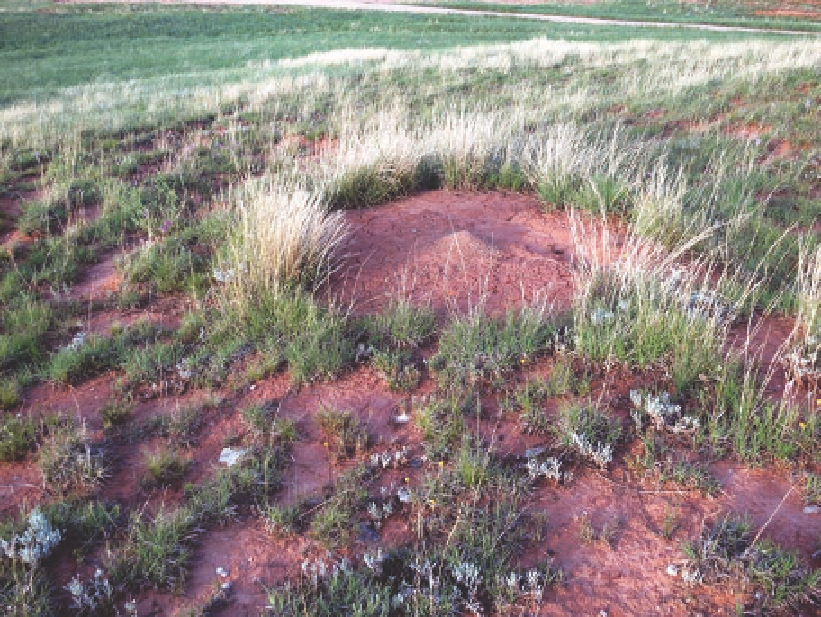Geoscience Reference
In-Depth Information
Fig. 6.14. the absence of plant growth on harvester ant
mounds probably is compensated for by the increased growth
around the mound. Plant growth on the perimeter would
be favored by better soil aeration caused by the ants, greater
availability of water and nutrients in the affected area, and
less competition from other plants.
ing biological diversity, affecting the amount of carbon
stored in the soil and nutrients available for growth
(plant and microbial), increasing soil erosion in some
areas, and creating the need for expensive weed con-
trol practices. Most introduced plants do not become a
problem, but a few outcompete native species, because
Moreover, they are free of their native pathogens and
species-specific herbivores. Grassland invaders on Wyo-
ming watch-lists include canada thistle, tumbleweed
(Russian thistle), cheatgrass, leafy spurge, and the vari-
ous knapweeds (diffuse, Russian, and spotted). cheat-
grass has received the most attention and is discussed
in the next chapter.
Unlike other disturbances, the effects of invasive
plants can be long-lasting and restoration is difficult.
their removal from grasslands—where that is judged
to be important—may require a combination of con-
trol measures, including herbicides; biological con-
trol; hand pulling; fire; changes in land management
practices; and targeted grazing by goats, sheep, and
sometimes cattle. Herbicides should be avoided when
possible, as they kill some native species as well as the
target plants and affect the soil biota in unknown ways.
the challenge seems hopeless when weedy plants domi-
nate a large area—hence the admonition by weed con-
trol specialists to learn how to identify noxious plants,
monitor rangelands closely for their appearance, and
act promptly to eliminate the plants while their popula-
tions are small and isolated.
Many Wyoming grasslands do not yet have invasive
weeds. Most likely this is the result of management
practices that maintain the native plants in good condi-
tion, especially during recent decades, when the seeds
of exotic plants have become so much more widespread.
essentially, the native plants are fully occupying the
spaces into which exotics might invade. Another fac-
tor may be that western grasslands are too dry for most
invasive plants. to illustrate, canada thistle and leafy
spurge tend to occur in the vicinity of riparian zones
or irrigated land rather than in semi-arid grasslands on
the upland. Realistically, though, land managers should

Search WWH ::

Custom Search